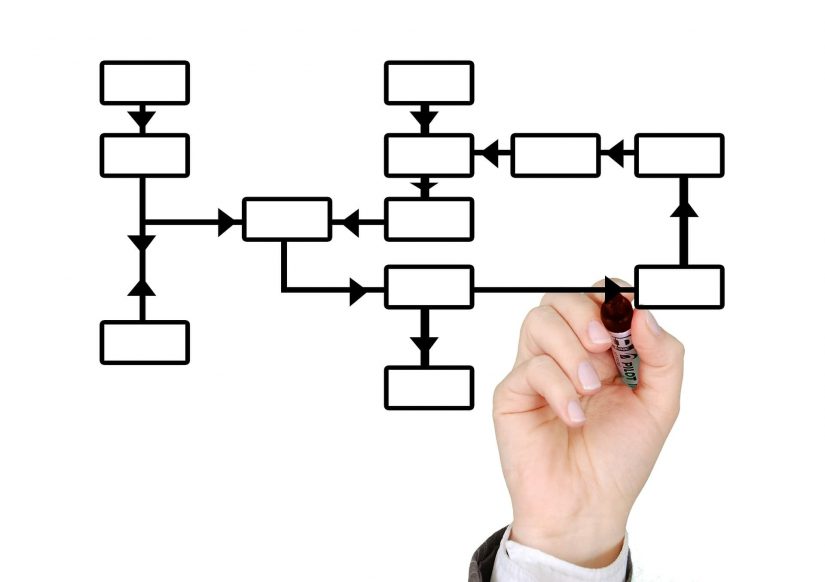HR Insights
Org Chart: definition, types and uses
What exactly is an org chart? Find out what they are and how to use them to improve the internal communication at your company.
HR Insights
What exactly is an org chart? Find out what they are and how to use them to improve the internal communication at your company.

Isabel García
HR Consultant

13 of January, 2025
Org chart(s) have been useful for a long time. As a business grows and the number of roles increases, it becomes necessary to help each new member understand where they fall in the organization.
In this article, you will learn about an organizational chart; how to use them to understand your business and how to ensure a smooth internal communication, for instance.
In order to be able to structure an organizational chart properly, you must have all the information about the company and its employees. In this sense, a software with an excellent database is ideal for you. Sesame HR is one of the best options you can currently find. It is a human resources software with multiple functionalities. With it, you will be able to create an organizational chart in the simplest way.
Organizational charts have been known by different names over the years: organograms, organigrams, organogram charts, or org charts. So, whichever name you choose, an organization chart represents the employees and the hierarchy of their roles.
In other words, an organigram is a visual representation of the workflow of a business. It is a clear view of a company’s internal structure, and it shows how the different roles interrelate within a company.
Org charts have been part of businesses and organizations for over a century.
While working as the general manager of the New York and Erie Railroad, Daniel McCallum designed a tree to illustrate the complex nature of the railway system. As a result, he came up with the first modern organogram.
However, it took six decades for organizational charts to come into full and common use. Consequently, they were popularized by Mr. Willard Brinton (a consulting engineer), who emphasized, in his textbook (Graphic Methods for Presenting Facts), the value of an org chart and encouraged its widespread use.
By the early 1920s, more businesses began to employ organizational charts at their organizations. Today, hr managers use these valuable charts to make structural decisions at their companies.
An organizational chart is a graphic representation of the company’s organizational structure. It shows multiple organizational units and the existing links between them, making it easy to understand at a glance the hierarchical relationships and dependencies that exist among the departments of a company.
Organization charts, therefore, outline the structure of a company. In this way, they are informative for both the company’s employees and external people. On the other hand, we can highlight that organizational charts play two main roles:
It should be emphasized that, in order to fulfill these two functions, an organizational chart must meet 3 essential requirements:
Currently, there are several diagrams that companies can use to create an organizational chart. However, every company is unique. It is necessary to know the types of organizational charts there are and how they are classified. This will allow companies to know which one best suits their needs.
Hierarchy charts are pyramidal structures that place the person or group with the highest power at the top, followed by others according to their ranking. It is the most common organizational chart.
Matrix charts are used to easily represent a structure where there is more than one manager or head. This can be the case when more than one department in a firm is assigned to work on a single project together. The matrix structure makes communication between departments easy.
This structure often excludes middle management ranks, leaving only the mainstream administrators and the workers. A flat organizational chart is ideal for a company that wants its workers to be more involved in the decision -making process and the running of the business.
Are there any benefits to using organizational charts? Beyond showing employee interrelationships, organizational charts can also help with:
One important use of and organizational chart is to show the structure of a company’s staff. A well-drafted organizational chart will show the strengths and weaknesses of your company. It will indicate a need to hire additional associates, create new roles, or make any other alterations within the company.
It is challenging for most companies to manage the internal communication between superiors and subordinates. Employees do not know who to contact for clarifications and questions. Furthermore, projects may be delayed and even get lost during the work process. Therefore, organizational charts can simplify communication within a company.
Most employees start at the bottom of their organization. Having an organizational chart can show the path to follow and how to get to that dream position in the company. Employees stay motivated when there is a clear path to reach the peak of their career.
Budgeting and allocating revenue becomes easier when an organizational chart is used. For instance, managers can easily identify the flow of funds and make plans accordingly.
With Sesame’s HR Software, you can create an organogram in a few simple steps. Our software gives you the ability to personalize your org chart using your company’s colors, various shapes, and labels. Furthermore, you can insert photos and links as you wish. Let us automatically generate the best organogram chart for your company’s exact needs.